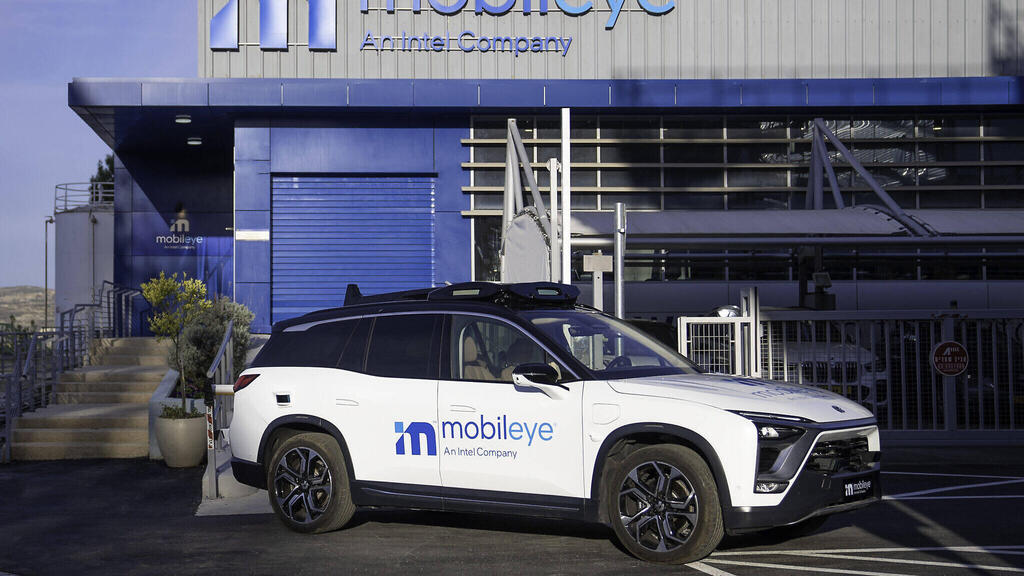
The less Intel, the better: Intel’s desperation could be Mobileye’s salvation
A fresh $1 billion sell-off shrinks Intel’s stake, and may lift the cloud hanging over Mobileye’s stock.
Intel’s sale of Mobileye shares for $1 billion made headlines as yet another step by the chip giant to navigate its deep crisis.
The motivation behind selling roughly 50 million shares through a secondary offering, along with an additional $100 million worth of shares sold directly to Mobileye, is to raise cash for building more chip factories and to help cover severance payments for the thousands of employees now being laid off. But for Israeli-based Mobileye, this move may have far greater consequences.
After all, for Intel, which is struggling on all fronts, from shrinking revenue to falling profits, with massive cash needs, a billion dollars is almost a drop in the ocean. Evidence of this could be seen when Intel’s stock price barely moved after the planned sale was announced.
By contrast, Mobileye’s stock actually rose slightly during trading on Wall Street, something that rarely happens when a controlling shareholder announces plans to sell 8% of a company. This underscores the sentiment inside Mobileye’s Jerusalem headquarters these days: the less Intel, the better.
Mobileye announced on Tuesday night that it will launch a secondary offering, with only Intel selling shares and pocketing over $1 billion. About 45 million shares will be sold, led by Goldman Sachs and Bank of America, which also received an underwriters’ allocation of another 6.5 million shares.
At Mobileye’s current share price, this amounts to nearly $1 billion. In addition, Mobileye has committed to buying $100 million of its own shares from Intel. Following the deal, Intel will remain Mobileye’s controlling shareholder, but its stake will shrink to about 80%. Mobileye’s current market value, nearly $15 billion, is almost the same as the $15.3 billion Intel paid when it acquired the autonomous vehicle solutions company back in 2017.
After the autonomous vehicle dream was delayed and Mobileye’s operations turned out to lack meaningful synergy with Intel’s core business, Intel re-listed the company on Wall Street in 2022. Even then, Intel was disappointed: it originally planned to float Amnon Shashua’s company at a valuation of $50 billion but had to settle for just $17 billion.
This latest share sale is not Intel’s first realization from its Mobileye stake - it already sold about 40 million shares in October 2023. At that time, however, Mobileye’s stock was trading at more than twice today’s price, around $42.
Intel’s willingness to sell shares today for half of what it fetched less than two years ago highlights its desperation and financial distress, and this is precisely Mobileye’s problem. Beyond its own operational challenges in the past year and a half, including a slowdown in the Chinese automotive market and sluggish development of the robo-taxi market, Intel’s looming overhang continues to drag Mobileye’s share price down.
Intel made clear during Mobileye’s 2022 re-IPO that it does not view autonomous vehicles as part of its core business, as mapped out under previous CEO Pat Gelsinger. New CEO Lip-Bu Tan has gone further: just two weeks ago, Intel informed staff it would shut down its remaining in-house autonomous vehicle unit (not part of Mobileye) and lay off all employees connected to that activity.
It is therefore clear to investors that Intel is simply waiting for further opportunities to offload more shares, creating constant expectations of additional large block sales and continued downward pressure on the stock.
Today, Mobileye shares trade below their IPO price and have badly underperformed the Nasdaq, down 6% so far this year. The main culprit is the sharp drop in its financial performance: most of Mobileye’s revenue still comes from selling advanced driver-assistance systems (ADAS), chips and software that make vehicles nearly autonomous. Revenue dropped due to an unexpected inventory build-up at customers late in 2023, compounded by a slowdown in China, where most of its sales are concentrated.
The company’s forecast for 2025 does not yet indicate these challenges are fully behind it, and President Trump’s revived tariff policy is another headwind. Yet Mobileye expressed cautious optimism early this year. Just this week, alongside the offering announcement, it gave an upbeat update for Q2 performance: the company expects revenue of $502–506 million, reflecting 15% year-over-year growth. If that materializes, it could help distance Mobileye from its disappointing full-year forecast of $1.7–1.8 billion.
Meanwhile, after about a decade of delays, the vision of the fully autonomous vehicle is finally showing signs of becoming real, at least in the robo-taxi segment. Self-driving taxis are already operating in multiple cities. Waymo, Google’s autonomous driving subsidiary, secured a massive $45 billion valuation in a private funding round six months ago, and Mobileye itself is ramping up its efforts.
Earlier this year, ride-sharing giant Lyft announced its autonomous taxi service, based on Mobileye’s technology, will hit Texas roads next year. Volkswagen also recently unveiled a new autonomous taxi in partnership with Uber, built on Mobileye’s technology.
Related articles:
In normal circumstances, this string of positive signals would boost momentum. But Mobileye remains stuck. The overhang of Intel’s expected share sales is a short-term cloud, but paradoxically, it could become a blessing if Intel persists. The reason is Mobileye’s limited liquidity since its IPO. Even after Intel’s stake drops to 80% this weekend, it remains unusually high by Wall Street standards and leaves too few shares available for active trading.
Intel is now taking another step to help attract big institutional buyers: it will convert Class B shares into Class A shares. This will increase the number of tradable shares and prevent institutional investors who already hold Mobileye stock from crossing the 5% ownership threshold that would make them “interested parties” requiring extra disclosures.
People close to Mobileye said yesterday that the structure and size of the offering were not driven by any pressure or coordination from Intel. But in this case, the parent company’s curse could become the subsidiary’s blessing. Mobileye could finally breathe easier once Intel is no longer its dominant shareholder.
